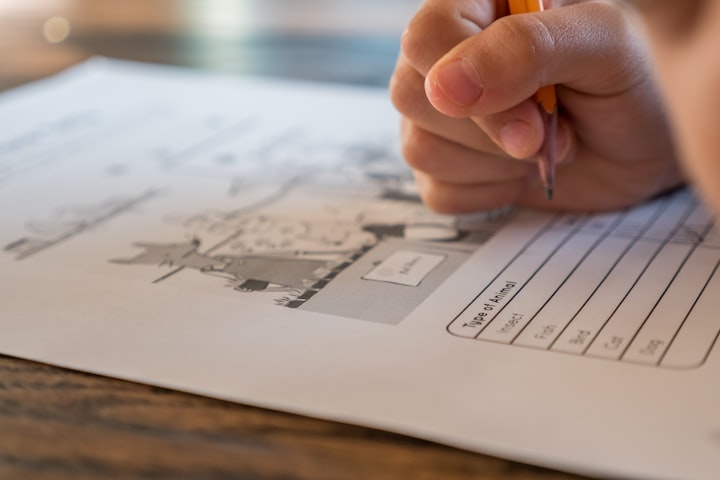
Common for flight schools
Common for them all is they have a chief flight instructor. This is the person in charge of all flight training and can be compared to the principle of an ordinary school. Depending on the size of the flight school this usually is a person with a lot of flight time and instruction time. Quite often they are retired airline pilots or ex-military pilots with a genuine interest in flying and flight training.
His or her job is to look after all the flight training with the school and you are likely to fly with him on stage checks or progression tests. Depending on the size of the school he may have own students.
Under the chief flight instructor you find from one to several assistant chief flight instructors. They are senior instructors with the flight school or have a lot of instruction time. Like the chief flight instructor they perform stage checks or progression tests. Often they are responsible for a certain area of the training, ex. private pilot courses or instrument rating courses. The assistant chief flight instructor(s) may have own students, and quite often teaching other instructor students due to their experience level.
Under the chief and his assistant(s) you find all the flight instructors. They do most of the training at the flight school. Depending on the instructor certificates held he or she will do most of the flight training with you. Many instructors are fresh out of flight school and work as instructors to build flight time. Unfortunately some are not very interested in instructing, so always pay attention to your instructor’s behavior in the beginning and go to your assistant chief flight instructor or chief flight instructor if you experience no progression. Sometimes the problem is the instructor, not you.
However with most serious flight schools this is not a problem.
Dual Certificate school
These are flight schools offering certificates to more then just their national certificates. Good examples are schools in the United States offering training to both FAA (USA) and JAA (Europe) certificates. These are usually large flight schools and they may be offering it through partnering schools in other countries. Some even have courses leading to both FAA and JAA certificates. This is commonly done by making you an FAA pilot first and build up flight time in the United States (as a flight instructor, small cargo or banner pilot), before you go back to Europe for conversion to JAA. Even though this way usually is a little more expensive it is a good way to build flight time and get dual certificates.
Part 61 School (USA),
The FAA has created two sets of rules for flight training; part 61 for flight instructors and part 141 for flight schools [read next]. A part 61 school is therefore nothing more then from one to several flight instructors offering flight training. Most flight clubs and Fixed base operators (FBOs) offering flight training under part 61.
In general, training with a part 61 school is less structured then part 141 but can also be a cheaper alternative. If you are looking to fly for leisure then this is a good alternative as you pretty much find them all over.
There is no difference in the flight certificates or ratings you obtain as they are the same for both part 61 and 141.
Part 141 School (USA)
The FAA has created two sets of rules for flight training; part 61 for flight instructors [read above] and part 141 for flight schools. A part 141 school has been approved by the FAA as a licensed training institution.
The FAA has set some standards to the training syllabus, classrooms, aircraft fleet, chief flight instructor, student pass rates, storing of student documents etc. The flight school has to apply and be inspected before being part 141 approved. Also they get regular inspections to make sure the standard meets the requirements.
All large flight schools and flight colleges in the United States are part 141 approved, and most part 141 schools also offer part 61 flight training.
Many students who want to make flying a career go to larger flight schools and therefore end up in a part 141 program. But it is not a guarantee that you get a good instructor (which is more important than 141 or 61) or get a job afterwards. There is no such thing as part 61 or part 141 certificates. In the end they look the same and you are expected to hold the same standard upon completion.
Ground School, Distant Learning and Online School
In addition to all the flight schools you also have schools only offering the theory part. As there is a lot of reading involved to become a pilot some only offer this part. The benefit is you can get rid of all the written pretty fast and then concentrate on the flying. With distant learning and online schools you can also be anywhere in the world and still do their programs.
Especially pilots brushing up on lost knowledge (there is a lot to keep track of), flight instructors renewing their certificate or pilots converting from one nationality to another use ground, distant learning or online schools.
Also as many part 61 schools do not offer ground school classes and paying an instructor by the hour to teach you may be expensive, doing a class this way may be smart when starting your training.
Airline Preparation School
These are flight schools mainly working with simulator training or checking out pilots for airlines and bigger companies. The fleet often consists of large more advanced aircrafts used for type rating training and their main customers are airlines and companies training newly hired pilots or on staff pilots doing recurrence training. Most are airline owned.
First Officer Program
Not so much a school but we mention it. These are usually small cargo or passenger companies offering time building on their aircrafts for cheap. You can buy bulks from 250-1000 hour flight time and the price varies around $20 an hour for second in command time on multi engine aircrafts. Many even get hired by the company afterwards. If you have the money and want to build multi engine time fast this can be a good alternative. Just remember that you also need to cover living expenses during the period, and you probably won’t have time for an extra job.






Comments
There are no comments for this story
Be the first to respond and start the conversation.